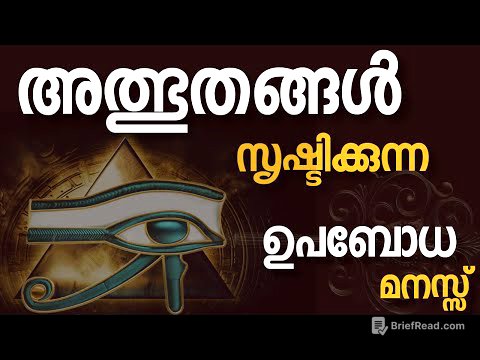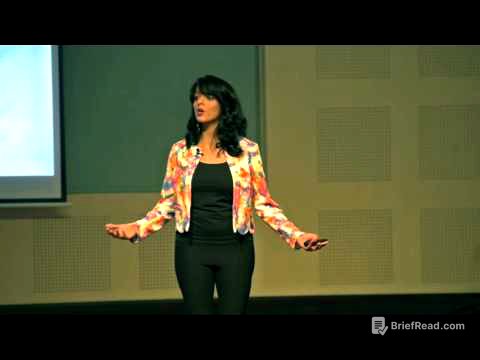TLDR;
This lecture provides a detailed overview of the Earth's interior, plate tectonics, and earthquakes. It covers the structure of the Earth, including the crust, mantle, and core, and explains how scientists study these layers. The lecture also discusses plate tectonics, the types of plate boundaries, and the causes and effects of earthquakes, including seismic waves and tsunamis. Finally, it touches on seismic zones in India and the Pacific Ring of Fire.
- Earth's interior structure and composition
- Plate tectonics and plate boundaries
- Earthquakes: causes, types, and seismic waves
Introduction [0:16]
The lecture begins with greetings and wishes for Durga Puja and Navratri. The instructor expresses hope that his voice is clear and confirms that the main part of geology will be discussed, focusing on the Earth's interior. He differentiates geology from geography, noting that geology studies the Earth's internal structure, while geography focuses on the atmosphere and surface topography. James Hutton is identified as the father of geology. The lecture will cover the Earth's inner structure, layers, and plate tectonics.
How We Know About Earth's Interior [2:51]
The lecture explains how we know about the Earth's interior, despite humans not being able to reach its depths. Direct sources include volcanoes, which bring magma (lava) from the interior, and rocks obtained through mining activities. Indirect sources include meteoroids, celestial bodies from the solar system that share similar material composition with Earth. Gravity variations also provide information about the Earth's interior, as gravity depends on both radius and material composition. Additionally, magnetic fields and earthquake waves help us understand the Earth's internal structure.
Earth's Interior Layers [7:56]
The Earth is divided into three layers: the crust, the mantle, and the core. The crust is the outermost layer, followed by the mantle, and the core is the innermost layer. These layers can be further divided into outer and inner crust, upper and lower mantle, and outer and inner core. The composition by mass and volume varies for each layer, with the mantle making up the largest portion by volume.
Crust Details [11:51]
The crust, the Earth's upper layer, varies in thickness from 0 to 100 km and is divided into continental and oceanic crust. Continental crust, found on land, is thicker and made of granite rock, while oceanic crust, found under the sea, is thinner, denser, and made of basaltic rock. The mantle is divided into the upper and lower mantle, with the upper mantle having two parts: a solid part and the asthenosphere. The lithosphere consists of the crust and the upper solid part of the mantle, while the asthenosphere is a weak, semi-molten layer where magma is found. The mantle's thickness extends to 2900 km.
Core Details [18:38]
The core is divided into the outer core, which is liquid, and the inner core, which is solid due to immense pressure. Density increases from the crust to the core. The crust is made of sial (silica and aluminum), while the core is made of nife (nickel and iron). The rotating liquid outer core generates Earth's magnetic field, which protects us from harmful solar waves.
Discontinuity [23:32]
Discontinuities are boundaries between different layers of the Earth. The Conrad discontinuity separates the upper and inner crust, the Mohs discontinuity separates the crust from the mantle, the Rappet discontinuity divides the upper mantle from the lower mantle, the Gutenberg discontinuity separates the mantle from the core, and the Lehmann discontinuity divides the outer core from the inner core.
Plate Tectonics [26:48]
Plate tectonics involves the movement of lithospheric plates over the asthenosphere. These plates are divided into seven major and numerous minor plates. Major plates include the North American, Pacific, Eurasian, South American, African, Antarctic, and Australian plates. Plate boundaries can be divergent (plates moving apart), convergent (plates colliding), or transform (plates sliding past each other). Divergent boundaries create new crust, convergent boundaries can result in subduction and volcanoes, and transform boundaries cause earthquakes.
Plate Boundaries [31:30]
Divergent plate boundaries lead to the formation of ridges and rifts as magma rises and solidifies. Convergent boundaries can result in subduction zones, where the denser plate sinks beneath the lighter one, leading to the formation of volcanoes. Transform boundaries involve lateral sliding, which neither creates nor destroys crust but can cause earthquakes.
Earthquakes [35:19]
Earthquakes are caused by the release of energy along fault lines when rough edges of plates get stuck and then suddenly slip. The point of energy release is called the focus or hypocenter, and the point directly above it on the Earth's surface is called the epicenter. Seismic waves, including body waves (P and S waves) and surface waves (L waves), are generated during earthquakes. P waves are longitudinal and can travel through solids, liquids, and gases, while S waves are transverse and can only travel through solids. Surface waves are the most destructive.
Seismic Waves and Shadow Zone [38:11]
Seismic waves are of two types: body waves and surface waves. Body waves include P-waves and S-waves. P-waves are longitudinal, travel faster, and can pass through solid, liquid, and gas. S-waves are transverse and can only pass through solids. Surface waves are the most destructive. The shadow zone is an area where certain seismic waves are not detected due to refraction and absorption by the Earth's interior. P-waves are not found between 105 and 145 degrees from the epicenter due to the liquid outer core slowing them down. S-waves do not travel through the liquid outer core, creating a larger shadow zone.
Earthquake Measurement and Effects [44:43]
Earthquakes are measured using seismographs, which record seismic waves. Magnitude is measured using scales like the Richter scale, while intensity is measured using the Mercalli scale. Effects of earthquakes include tsunamis (caused by underwater earthquakes), landslides, avalanches, and fires. Safety measures during an earthquake include seeking shelter under a table.
Types of Earthquakes [48:33]
Earthquakes are classified into tectonic, explosion, collapse, volcanic, and reservoir-induced types. Tectonic earthquakes are caused by plate movements, explosion earthquakes by mining explosions, collapse earthquakes by underground mine collapses, volcanic earthquakes by volcanic activity, and reservoir-induced earthquakes by the construction of dams.
Seismic Zones in India [50:42]
India is divided into four seismic zones: Zone 2 (least active), Zone 3, Zone 4, and Zone 5 (most active). Zone 5 includes Ladakh, Jammu and Kashmir, the Himalayan region, and the North East. The peninsular plateau is mostly in Zone 2. The Bhuj earthquake in Gujarat occurred in 2001 and measured 7.6 on the Richter scale.
Pacific Ring of Fire and Conclusion [52:57]
The Pacific Ring of Fire is an area prone to volcanic activity and earthquakes, accounting for 75% of the world's volcanoes and 90% of earthquakes. Countries like Japan and Indonesia are located in this zone. The lecture concludes with a thank you and an announcement of the next lecture topic: rocks.




![[Digimon Podcast] LiT Episode 94 - DigiEgg is Not On Crash](https://wm-img.halpindev.com/p-briefread_c-10_b-10/urlb/aHR0cDovL2ltZy55b3V0dWJlLmNvbS92aS9VYnBDbUdhbEJoVS9ocWRlZmF1bHQuanBn.jpg)




